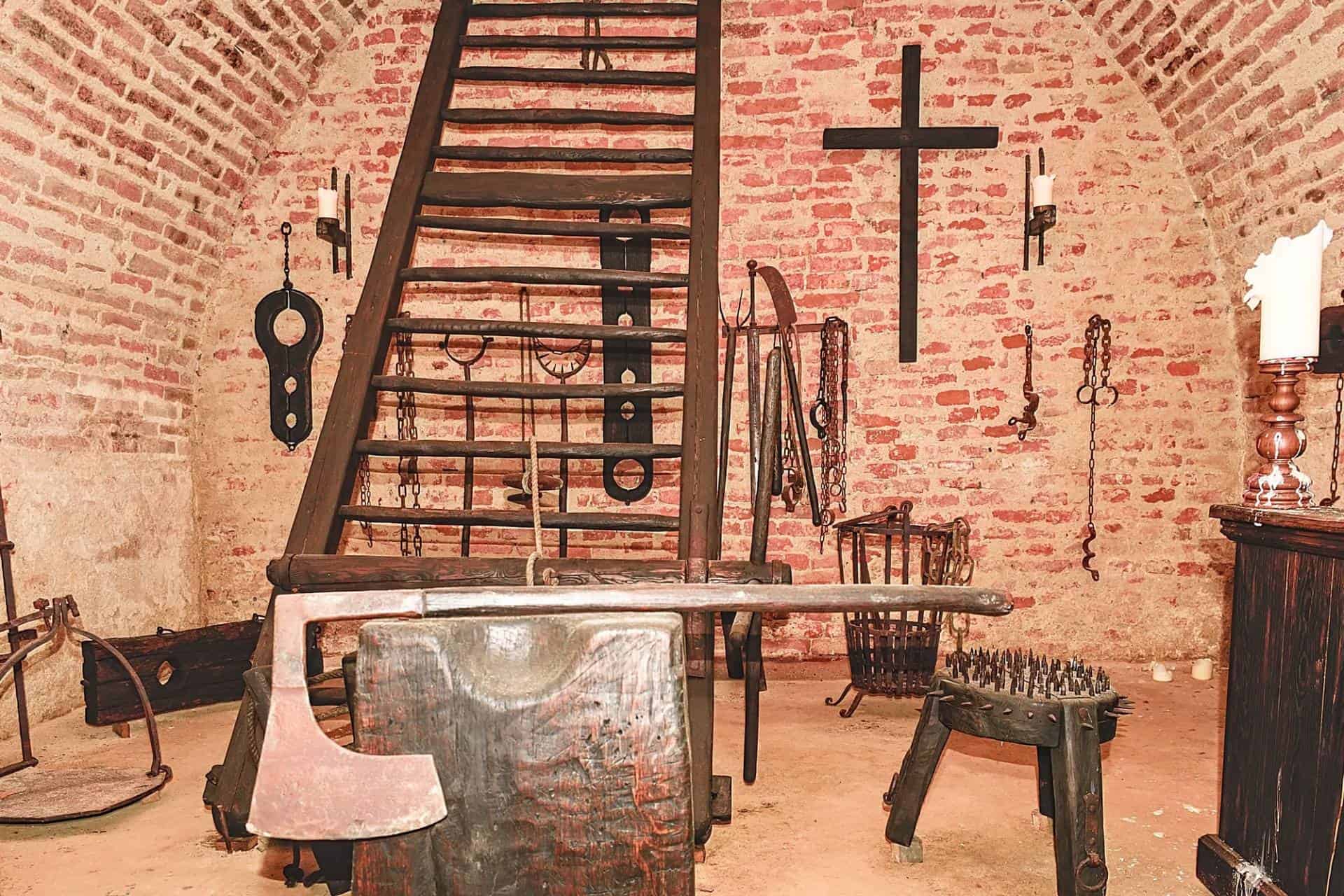
Medieval torture museums and medieval crimes
Torture museums, while dark and unsettling, serve as important reminders of the history of human rights and the suffering endured by many in the past. Here are some of the notable torture museums in Europe and their locations:
- The Medieval Crime Museum (Mittelalterliches Kriminalmuseum) - Rothenburg ob der Tauber, Germany:
- This museum in the picturesque town of Rothenburg focuses on medieval crime and punishment, including various forms of torture.
- The Torture Museum (Museo della Tortura) - San Gimignano, Italy:
- Located in the historic town of San Gimignano, this museum displays an extensive collection of medieval instruments of torture.
- The Museum of Torture Instruments - Prague, Czech Republic:
- Situated in the heart of Prague, this museum features a comprehensive collection of torture devices used throughout history.
- Torture Museum Oude Steen - Amsterdam, Netherlands:
- Found in the heart of Amsterdam, this museum is housed in one of the city's oldest buildings and showcases various instruments of torture.
- The Museum of Torture - Rüdesheim am Rhein, Germany:
- This museum in the charming town of Rüdesheim on the Rhine River explores the history of torture with a focus on the medieval period.
- The Torture Museum (Foltermuseum) - Vienna, Austria:
- Located in Vienna's city center, this museum delves into the history of torture with a focus on the Middle Ages and early modern period.
- Torture Museum Sintra - Sintra, Portugal:
- Situated in the historic town of Sintra, this museum features a collection of torture instruments from different eras.
- The Museum of Medieval Torture Instruments - Saint Petersburg, Russia:
- This museum in Saint Petersburg exhibits an array of medieval torture devices and provides insights into their usage.
- The Museum of Torture - Carcassonne, France:
- Located within the medieval fortress of Carcassonne, this museum displays various instruments of torture used in medieval Europe.
- The Museum of Torture - Wroclaw, Poland:
- This museum in Wroclaw showcases a wide range of torture instruments and provides historical context for their use.
Europe is home to several torture museums that provide insight into the dark history of human cruelty and punishment. One such museum is located in Prague, Czech Republic, known as the Museum of Medieval Torture Instruments. This exhibition offers visitors a glimpse into the brutal methods of torture used during the Dark Ages and beyond. The museum showcases a variety of torture exhibits, including devices like the iron maiden, rack, and thumbscrew, highlighting the gruesome practices employed by authorities to extract confessions or punish criminals. Additionally, visitors can learn about the role of torture in criminal law and its impact on society through informative displays and interactive exhibits.
Another notable torture museum in Europe is the Museum of Torture Instruments in Amsterdam, Netherlands. Housed in a small museum near the city center, this exhibition explores the history of torture and punishment in the Netherlands and beyond. Visitors can view a collection of medieval torture instruments, including the infamous iron maiden and various implements used for medical torture. The museum also delves into the legal and ethical implications of torture throughout history, shedding light on the complexities of criminal law and human rights. Overall, these torture museums in Europe serve as sobering reminders of humanity's capacity for cruelty and the importance of understanding the past to prevent similar atrocities in the future.
In conclusion, the various torture museums in Europe offer visitors a chilling glimpse into the dark and often barbaric practices of the past, whether medieval or modern. These museums serve as important educational tools, highlighting the brutal methods used by authorities to maintain control and instill fear in society. From the iron maiden to the pillory, these exhibits shed light on the use of torture as a means of punishment, interrogation, and social control throughout history. Moreover, these museums also provide insight into the legal and ethical implications of torture, including its role in criminal law and the abuses of power by monarchs with absolute authority. Ultimately, the stark realities depicted in these museums make the drunken antics of modern-day revelers seem like child's play compared to the horrors endured by those subjected to torture in the past. Whether visiting for educational purposes or simply to satisfy curiosity, these museums are open to the public, serving as reminders of humanity's capacity for cruelty and the importance of upholding human rights and dignity in the present day.










